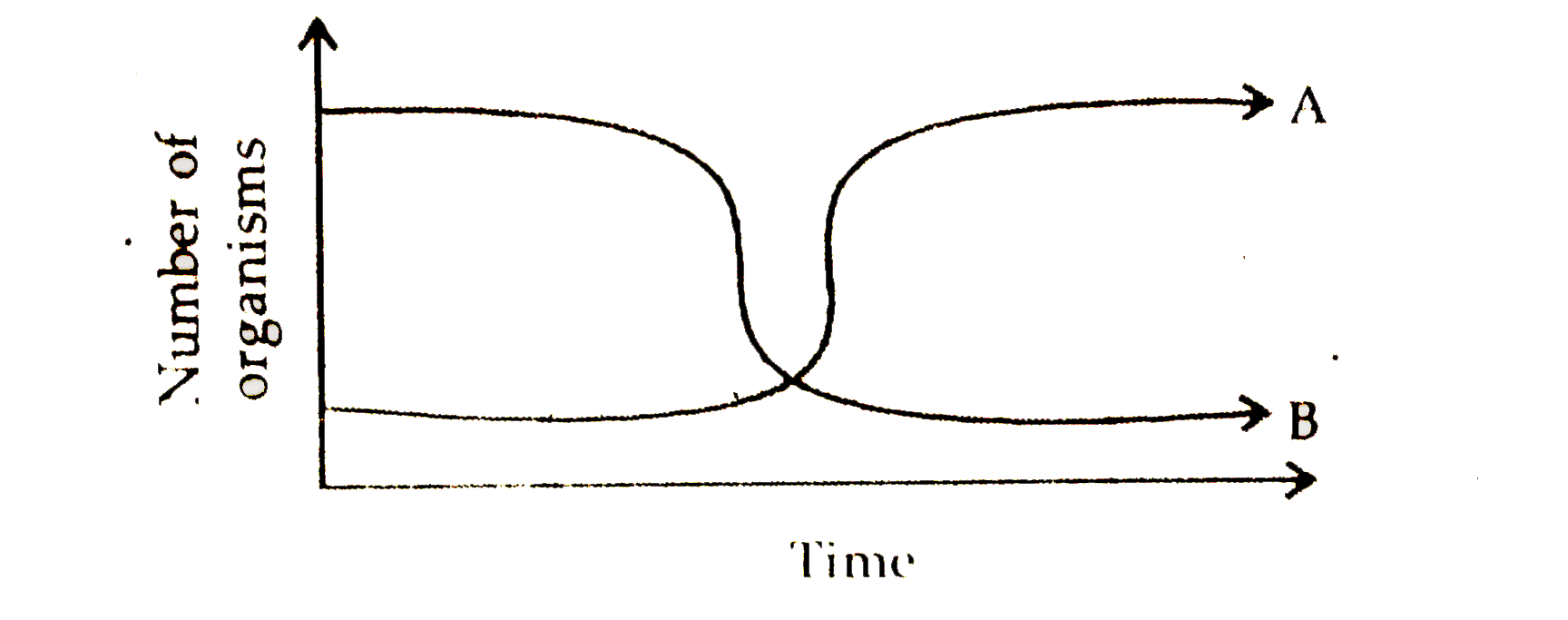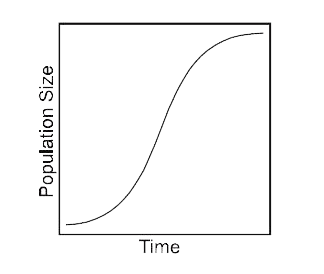In growth pattern, (1 - N/K) is
Carrying capacity
Intrinsic rate of natural increase
Environmental resistance
Biotic potential
The correct Answer is:C
To solve the question regarding the growth pattern represented by the expression (1 - N/K), we will analyze the components of the expression and the options provided.
1. Understanding the Expression (1 - N/K):
- In this expression, N represents the current population size, and K represents the carrying capacity of the environment. The carrying capacity is the maximum population size that an environment can sustain indefinitely without being degraded.
2. Analyzing the Components:
- The term N/K gives us a ratio of the current population size to the carrying capacity.
- When N is much smaller than K, N/K approaches 0, making (1 - N/K) approach 1. This indicates that the population has room to grow.
- Conversely, as N approaches K, N/K approaches 1, and (1 - N/K) approaches 0, indicating that the population is nearing its carrying capacity and growth will slow down.
3. Identifying the Concept:
- The expression (1 - N/K) reflects the idea of environmental resistance. Environmental resistance includes all the factors that limit the growth of a population as it approaches its carrying capacity. These factors can include food availability, predation, disease, and other ecological constraints.
4. Evaluating the Options:
- Option 1: Carrying Capacity - This is represented by K, not (1 - N/K).
- Option 2: Intrinsic Rate of Natural Increase - This is a measure of how fast a population can grow under ideal conditions, not represented by (1 - N/K).
- Option 3: Environmental Resistance - This option aligns with the concept of (1 - N/K), as it represents the limitations on growth as the population approaches carrying capacity.
- Option 4: Biotech Potential - This refers to the maximum growth potential of an organism, which is not what (1 - N/K) represents.
5. Conclusion:
- Based on the analysis, the expression (1 - N/K) represents environmental resistance. Therefore, the correct answer is Option 3.
Final Answer:
The expression (1 - N/K) represents environmental resistance.
- In this expression, N represents the current population size, and K represents the carrying capacity of the environment. The carrying capacity is the maximum population size that an environment can sustain indefinitely without being degraded.
- The term N/K gives us a ratio of the current population size to the carrying capacity.
- When N is much smaller than K, N/K approaches 0, making (1 - N/K) approach 1. This indicates that the population has room to grow.
- Conversely, as N approaches K, N/K approaches 1, and (1 - N/K) approaches 0, indicating that the population is nearing its carrying capacity and growth will slow down.
- The expression (1 - N/K) reflects the idea of environmental resistance. Environmental resistance includes all the factors that limit the growth of a population as it approaches its carrying capacity. These factors can include food availability, predation, disease, and other ecological constraints.
- Option 1: Carrying Capacity - This is represented by K, not (1 - N/K).
- Option 2: Intrinsic Rate of Natural Increase - This is a measure of how fast a population can grow under ideal conditions, not represented by (1 - N/K).
- Option 3: Environmental Resistance - This option aligns with the concept of (1 - N/K), as it represents the limitations on growth as the population approaches carrying capacity.
- Option 4: Biotech Potential - This refers to the maximum growth potential of an organism, which is not what (1 - N/K) represents.
- Based on the analysis, the expression (1 - N/K) represents environmental resistance. Therefore, the correct answer is Option 3.
The expression (1 - N/K) represents environmental resistance.
Similar Questions
Compaines with a higher growth pattern are likely to :
(a) pay lower dividends
(b) pay higher dividends
(c) dividends not affected by growth considersattions
(d) None of the above.View SolutionTwo types to aquatic organisms in a lake show specific growth patterns as shown below, in a brief period of time. The lake is adjacent to an agricultural land extensively with fertilizers.
Answer the question based on the facts given above :

(i) Name the organisms depicting the patterns A and B.
(ii) State the reason for the growth pattern seen in A.
(iii) Write the effects of the growth patterns seen above.View Solution
Knowledge Check
- Question 1 - Select One
In logistic growth pattern (KNK) is :-
ACarring capacityBIntrinsic rate of natural increaseCenvironmental resistanceDBiotic potential and environmental resistance - Question 2 - Select One
(A) : When resources become progressively limiting, the population growth pattern turns logistic.
(R) : Population growth is ultimately limited by the carrying capacity of the environment.AIf both (A) and (R) are true but (R) is not the correct explanation of (A).BIf both (A) and (R) are true and (R) is the correct explanation of (A).CIf (A) is true but (R) is false.DIf both (A) and (R) are false. - Question 3 - Select One
Many population colonising a new habitat show a logistic population growth pattern over time, as shown in the figure below.

In such a population, the POPULATION growth rateAstays constant over timeBincreases and then reaches an asymptoteCdecreases over timeDincreases to a maximum and then decrease
What would be the growth rate pattern, when the resources are unlimited?
View SolutionCompanies with a higher growth pattern are likely to
View SolutionVerhult - Pearl logistic growth pattern is :-
View SolutionIn the equation for S-shaped population growth dNdt=rN[K−NK] , r represents
View SolutionPopulation growth curve is sigmoid, if the growth pattern is
View Solution

